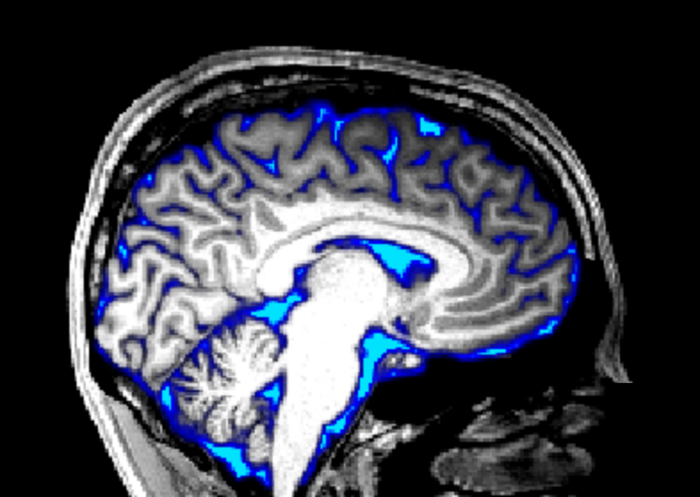Researchers at Boston University, USA report that the flow of cerebrospinal fluid in the brain is linked to waking brain activity. Led by Stephanie Williams, and publishing in the open access journal PLOS Biology on March 30th, the study demonstrates that manipulating blood flow in the brain with visual stimulation induces complementary fluid flow. The findings could impact treatment for conditions like Alzheimer’s disease, which have been associated with declines in cerebrospinal fluid flow.

Credit: Stephanie D. Williams (CC-BY 4.0, https://creativecommons.org/licenses/by/4.0/)
Researchers at Boston University, USA report that the flow of cerebrospinal fluid in the brain is linked to waking brain activity. Led by Stephanie Williams, and publishing in the open access journal PLOS Biology on March 30th, the study demonstrates that manipulating blood flow in the brain with visual stimulation induces complementary fluid flow. The findings could impact treatment for conditions like Alzheimer’s disease, which have been associated with declines in cerebrospinal fluid flow.
Just as our kidneys help remove toxic waste from our bodies, cerebrospinal fluid helps remove toxins from the brain, particularly while we sleep. Reduced flow of cerebrospinal fluid is known to be related to declines in brain health, such as occur in Alzheimer’s disease. Based on evidence from sleep studies, the researchers hypothesized that brain activity while awake could also affect the flow of cerebrospinal fluid. They tested this hypothesis by simultaneously recording human brain activity via fMRI and the speed of cerebrospinal fluid flow while people were shown a checkered pattern that turned on and off.
Researchers first confirmed that the checkered pattern induced brain activity; blood oxygenation recorded by fMRI increased when the pattern was visible and decreased when it was turned off. Next, they found that the flow of cerebrospinal fluid negatively mirrored the blood signal, increasing when the checkered pattern was off. Further tests showed that changing how long the pattern was visible affected blood and fluid in a predictable way, and that the blood-cerebrospinal fluid link could not be accounted for by only breathing or heart rate rhythms.
Although the study did not measure waste clearance from the brain, it establishes that simple exposure to a flashing pattern can increase the flow of cerebrospinal fluid, which could be a way to combat natural or unnatural declines in fluid flow that occur with age or disease.
Laura Lewis, senior author of the study, adds, “This study discovered that we can induce large changes in cerebrospinal fluid flow in the awake human brain, by showing images with specific patterns. This result identifies a noninvasive way to modulate fluid flow in humans.”
#####
In your coverage, please use this URL to provide access to the freely available paper in PLOS Biology: http://journals.plos.org/plosbiology/article?id=10.1371/journal.pbio.3002035
Citation: Williams SD, Setzer B, Fultz NE, Valdiviezo Z, Tacugue N, Diamandis Z, et al. (2023) Neural activity induced by sensory stimulation can drive large-scale cerebrospinal fluid flow during wakefulness in humans. PLoS Biol 21(3): e3002035. https://doi.org/10.1371/journal.pbio.3002035
Author Countries: United States of America
Funding: see manuscript
Journal
PLoS Biology
DOI
10.1371/journal.pbio.3002035
Method of Research
Experimental study
Subject of Research
People
COI Statement
Competing interests: I have read the journal’s policy and the authors of this manuscript have the following competing interests: L.D.L. is an inventor on a patent application for an MRI method for measuring CSF flow and is an Academic Editor at PLoS Biology. The other authors report no competing interests.




